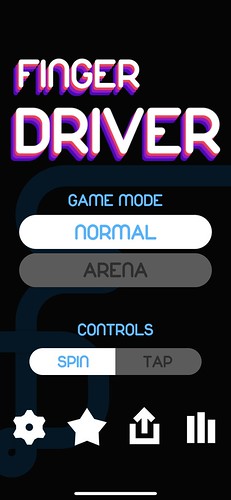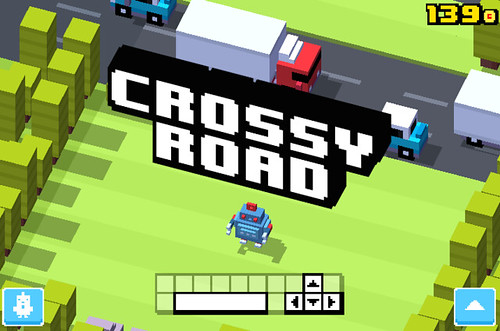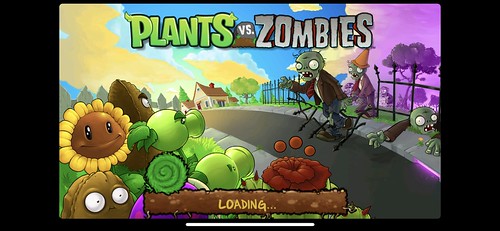
Summary
For this blog post I have analyzed 3 games in order to learn more about how to build my own game in the future.
Task 1

The only rule of the game is to not hit the side of the track, and it is also the only way to die. You can accumulate coins by completing the missions given to you or by running your car through the coins on the track while driving. While driving, you can not only accumulate coins but also shields, which will protect you for a short amount of time if you happen to run into the side of the track, but then will disappear. The game is challenging because to steer you have to rotate your finger around the wheel but also follow the track, or you can change your control so you’re tapping either side of the screen to turn left and right. The steering controls are what make the game harder than other driving games because it is more difficult to master. The track also progressively becomes more difficult as you continue to drive.

Task 2
The primary goal of the game Finger Driver is to gain as much distance as possible in the track without hitting the sides of the track. The separate goals, which I mentioned in Task 1, are to accumulate coins through completing missions or driving. These coins can be used to purchase new cars. The genre of the game is a 2D Top-Down driving game. (?) The game requires only one mechanic, which is steering/driving. There is no mechanic for speed, or something to make the car go, as it moves at a constant speed automatically for as long as you play. The game is very easy to navigate, as the layout of the game is very simple and there are only 2 main menus and the design is based off of simplicity to appeal to the player. The player finds motivation through beating their own high score, but also by gaining more money and completing missions (which help you gain more money). I do not think that the game is balanced between the risk and the reward though, as there is a very limited amount of cars you can purchase with the coins so once all the cars are purchased part of the motivation is lost. Technically, you can get more cars by watching ads (4 ads per car), but that’s sort of lame and takes away from the main goal of the game. So, once all the cars have been purchased, there no longer seems to be a point to complete the missions or to earn more money while driving, as you can no longer use the money. This leaves the sole motivation of beating your last high score, which makes the risk greater than the reward. Of course, before the cars are purchased, the risk and reward are more balanced.
Task 3
Games that use 3D are generally more immersive with the main character, or more story oriented. Such genres that fit well with 3D are survival, fighting, dance, sports, first-person shooter, etc. All of these genres rely more heavily on the characters. The actions required for some of these games also flow better with a 3D environment because the intention is for them to be more realistic. The controls also have to be more immersive and dynamic for the style of game, which will fit better in a 3D environment.
2D games will work best with genres such as platformer, puzzle, sidescroller, etc. This is because the games are based of simplicity, and is why they appeal to audiences, so they do not require the immersive plot that a 3D game will. A 2D game has reasonably basic graphics, controls, objects, etc, and this is just because of the genre of game. A 3D game with super basic controls and graphics wouldn’t be very appealing just as a 2D game with a super immersive plot and character depth. This is because with a game that has such depth to it, players want to see the design of the games to match the depth. It doesn’t make the game better or worse, just changes the appeal and to whom.
Task 4
Game #1: Temple Run

- The genre of this game is a platform, with maybe the sub genre of survival or action. This is because it is simply a character running at an automated pace and dodging obstacles through a few simple actions (jump, slide, turn left/right).
- The game targets those who aren’t looking for a very complicated game, but can be played by anyone. It attracts many younger kids because it is so easy to learn, but again it can be played by anyone. There is the possibility of it being restricted by a parent or something for mild violence, bit otherwise almost anyone can play it.
- The goal is to get as far as possible without dying because of an obstacle or the giant monster chasing you. There is also the added objective of completing the missions given to acquire money.
- You are an explorer of some sort who has found a treasure in a temple, but after finding it you find a giant monkey monster things which presumably guards the treasure you just found. It is now chasing you as you attempt to escape the temple alive.
- The game overall is very easy to play, and the increase in difficulty the farther you get is reasonable and makes the game progressively more fun and entertaining. It gets much faster as you survive for longer, and this adds a large excitement factor and makes it very fun to play. It is easy to learn, and the game is balanced with its risk and reward. The graphics are decent, but could be improved.
Game #2: Crossy Road

- The genre for this game is primarily survival, but could be included in the sub genre platform. This is due to the design of the game, which is to survive as long as possible but also to avoid obstacles.
- The intended audience for this game is almost everyone (an infant might be the exception). It is very playable and easy to learn, and there is no violence or anything.
- The goal is to go as far across the road as possible without dying by being hit by a car or train, drowning in the water, or being picked up by the eagle for taking too much time.
- You are a chicken (or whatever other character is selected) attempting to cross the road. You don’t want to die by any of the given means: hit by car, hit by train, drowning, or eaten by eagle. Because of this you are stuck in an eternal loop of repeatedly hopping across an endless road in which you will die every time only to be re-spawned.
- The overall look of the game is very boxy and arcade-like. This arcade aesthetic adds nicely to the game
Game #3: Plants vs. Zombies

- The genre of this game is primarily survival. A sub-genre could be action. The game really only fits survival because it isn’t super action oriented and is simply a game about plants attempting to survive a zombie attack.
- The game is simple enough to where most people could probably learn to play it, but the game is very strategy oriented so it probably appeals more to people above the age of 10.
- The goal of the game is to complete each level by killing all of the zombies that invade your house using the plants you have. The objective is to increase in levels and by doing so unlock more plants and challenges and earn money.
- You’re house is being invaded by zombies. The only way to stop them is to plant your plants that have miraculously become skilled in combat around your house to kill the zombies. If a zombie invades your house, the zombie will eat your brain. (bummer)
- The game is kind of child like and glorifies zombie apocalypses more than other games, which is probably why it is still played by younger kids. The graphics are decent and serve their purpose, but again they are very cartoon like and are meant to make zombies appear much less scary than your average 1st person shooter.
Task 5
- What is the general flavor of the game? You can make references to other games, movies, books, or any other media if your game contains similar characters, actions, or ideas.
- What is the player’s role? Is the player pretending to be someone or some- thing, and if so, what? Is there more than one? How does the player’s role help to define the gameplay?
- Does the game have an avatar or other key character? Describe him/her/it.
- What is the nature of the gameplay, in general terms? What kinds of challenges will the player face? What kinds of actions will the player take to overcome them?
- Does the game fall into an existing genre? If so, which one?
- Why would someone want to play this game? Who is the game’s target audience?
- What is the game’s setting? Where does it take place?
- Will the game be broken into levels? What might be the victory condition for a typical level?
- Does the game have a narrative or story as it goes along? Summarize the plot in a sentence or two.
What I Learned
I learned more about how different aspects of game design appeal to different audiences, and how every element contributes to the overall feel of the game. This helped me learn to identify different game genres, what their target audience is, what the game’s goals and objectives are, the narrative of the game, and the overall feel of the game. This will help me build games in the future because I will be able to identify and make decisions on the elements listed above.